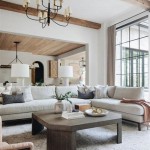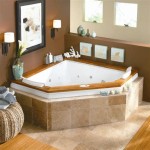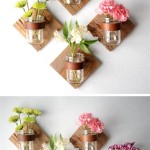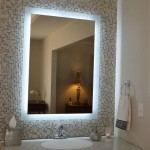How To Decorate a Room With Blue Walls and White Furniture
Decorating a room with blue walls and white furniture offers a versatile canvas for creating a variety of aesthetics, from serene coastal retreats to crisp, modern spaces. The combination of these two colors provides a foundation of calm and brightness, allowing for the introduction of supplemental colors, textures, and decorative elements to achieve a desired style. Skillful execution requires careful consideration of the specific shade of blue used, the style of the white furniture, and the integration of complementary accessories.
Before embarking on the decoration process, assessing the room's existing characteristics is crucial. Factors like room size, natural light availability, and architectural style significantly influence design choices. A small room with limited natural light benefits from lighter shades of blue and predominantly white furniture to maximize brightness and create an illusion of spaciousness. Conversely, a larger room can accommodate deeper, richer blues, allowing for more flexibility in furniture placement and accessory selection.
Choosing the Right Shade of Blue
The selection of the blue paint color is arguably the most important decision in the decoration process. Blue encompasses a vast spectrum, ranging from pale sky blues to deep navy hues, and each shade evokes a different feeling. Light blues, such as powder blue or cerulean, create an airy and tranquil atmosphere, making them well-suited for bedrooms or bathrooms. Medium blues, like denim or cornflower blue, offer a balanced and versatile option that works well in living rooms or dining rooms. Dark blues, such as navy or indigo, exude sophistication and drama, making them ideal for accent walls or studies. It is imperative to test paint samples on the walls under various lighting conditions before committing to a specific color, as the appearance of blue can shift significantly depending on the time of day and light source.
Furthermore, the undertones of the blue paint should be carefully considered. Some blues have cool undertones, leaning towards gray or green, while others have warmer undertones, leaning towards red or purple. Matching the undertones of the blue to the room's existing elements, such as flooring and trim, ensures a cohesive and harmonious aesthetic. For example, a cool-toned blue complements gray or white trim, while a warm-toned blue pairs well with cream or beige trim.
The finish of the paint is also a crucial factor. Matte finishes absorb light, creating a soft and velvety look, while gloss finishes reflect light, creating a more vibrant and dramatic effect. Matte finishes are generally preferred for walls in living rooms and bedrooms, while gloss finishes are often used for trim and doors due to their durability and ease of cleaning.
Selecting and Arranging White Furniture
The choice of white furniture is equally important in achieving the desired aesthetic. White furniture comes in a variety of styles, from classic and traditional to modern and minimalist. The style of the furniture should complement the overall design of the room and the chosen shade of blue.
For a coastal-inspired room, white furniture with a distressed or weathered finish can create a relaxed and beachy vibe. Linen or cotton upholstery in neutral tones, such as beige or gray, further enhances this aesthetic. Shiplap walls or nautical-themed accessories can be added to complete the look.
For a modern and minimalist room, white furniture with clean lines and simple silhouettes is ideal. Leather or microfiber upholstery in white or gray creates a sleek and contemporary look. Minimalist art and geometric patterns can be incorporated to further enhance this style.
The arrangement of the white furniture is also crucial to creating a functional and aesthetically pleasing space. Consider the flow of traffic and the intended use of the room when arranging furniture. In a living room, the sofa should be positioned to maximize seating and conversation, while in a bedroom, the bed should be the focal point of the room. Avoid overcrowding the room with too much furniture, as this can make the space feel cramped and cluttered.
Introducing different textures through the furniture can add depth and visual interest to the room. Consider incorporating furniture with different textures, such as a woven rug, a velvet throw pillow, or a leather armchair. Mixing textures creates a more dynamic and inviting space.
Incorporating Complementary Colors and Accents
While blue walls and white furniture provide a strong foundation, incorporating complementary colors and accents is essential to adding personality and visual interest to the room. The specific colors and accents chosen should complement the overall design and the chosen shade of blue.
Yellow and orange are complementary colors to blue, and they can be used to add warmth and energy to the room. Consider incorporating yellow or orange throw pillows, artwork, or decorative accessories. Metallic accents, such as gold or brass, can also add a touch of luxury and sophistication to the space.
Green and teal are analogous colors to blue, and they can be used to create a harmonious and tranquil atmosphere. Consider incorporating green or teal plants, curtains, or rugs. Natural materials, such as wood and rattan, can also add warmth and texture to the room.
Gray and black can be used to add a touch of sophistication and modernity to the room. Consider incorporating gray or black throw pillows, lamps, or artwork. Geometric patterns and graphic prints can also enhance this style.
Artwork is an essential element in any room, and it can be used to add personality and visual interest. Choose artwork that complements the overall design and the chosen shade of blue. Consider hanging a large statement piece on the wall or creating a gallery wall with smaller prints.
Lighting is also a crucial factor in creating the desired atmosphere. Incorporate a variety of lighting sources, such as overhead lighting, table lamps, and floor lamps, to create a well-lit and inviting space. Consider using dimmer switches to adjust the lighting to suit different moods and occasions.
Rugs are an excellent way to add color, texture, and pattern to a room. Choose a rug that complements the overall design and the chosen shade of blue. Consider using a patterned rug to add visual interest or a solid rug to create a more understated look.
Window treatments can also play a significant role in the overall design of the room. Choose curtains or blinds that complement the overall design and provide privacy and light control. Consider using sheer curtains to allow natural light to filter through or blackout curtains to block out light for sleeping.
Plants can add life and vibrancy to any room. Consider incorporating a variety of plants, such as potted plants, hanging plants, or succulents. Plants can help to purify the air and create a more relaxing and inviting atmosphere.
Decorative accessories, such as vases, candles, and books, can add personality and visual interest to the room. Choose accessories that complement the overall design and reflect personal style. Avoid overcrowding the room with too many accessories, as this can make the space feel cluttered.
Ultimately, decorating a room with blue walls and white furniture is a process of experimentation and personal expression. By following these guidelines and incorporating personal style, a beautiful and inviting space can be created.
Maintaining a consistent color palette throughout the room creates a cohesive and unified look. While incorporating accent colors is important, ensure that they complement the blue and white foundation and don't overwhelm the space. Use the 60-30-10 rule as a guideline: 60% of the room should be the dominant color (blue), 30% should be a secondary color (perhaps a neutral tone or a complementary color), and 10% should be an accent color (used sparingly for visual interest).
Pay attention to the scale and proportion of furniture and accessories in relation to the room size. Large furniture can overwhelm a small room, while small accessories can get lost in a large room. Choose pieces that are appropriately sized for the space and create a sense of balance and harmony.
Regularly decluttering and organizing the room is essential for maintaining a clean and inviting space. Remove any unnecessary items and keep surfaces clear of clutter. This will help to keep the room feeling fresh and airy.

Blue Bedroom Design Home Decor Color Schemes
:strip_icc()/262723384_455751379245336_6998901072180898093_n-c2d390ed69ad4d91928243b37f3c1582.jpg?strip=all)
17 Ways To Decorate With Light Blue In A Bedroom

25 Gorgeous Blue Bedrooms Bedroom Decorating Ideas

75 Brilliant Blue Bedroom Ideas And Photos Shutterfly

Calming Blue Bedroom Decor Ideas

75 Brilliant Blue Bedroom Ideas And Photos Shutterfly

80 Blue Bedroom Wall Designs For Inspiration

18 Best Blue And White Rooms Decor Photos Of Pretty

25 Best Blue Rooms Decorating Ideas For Walls And Home Decor

75 Brilliant Blue Bedroom Ideas And Photos Shutterfly
Related Posts







